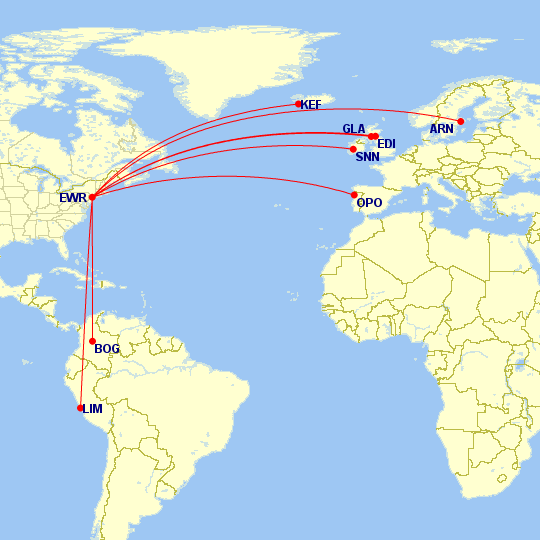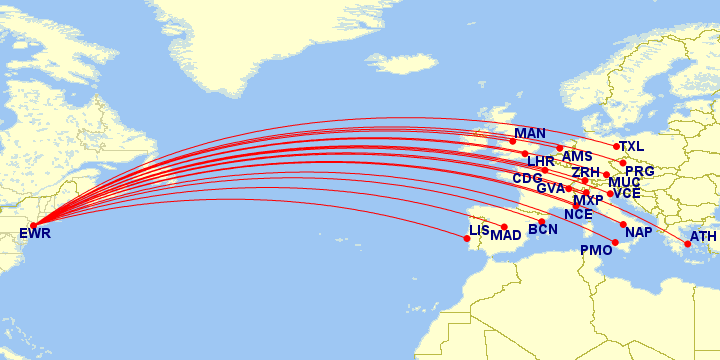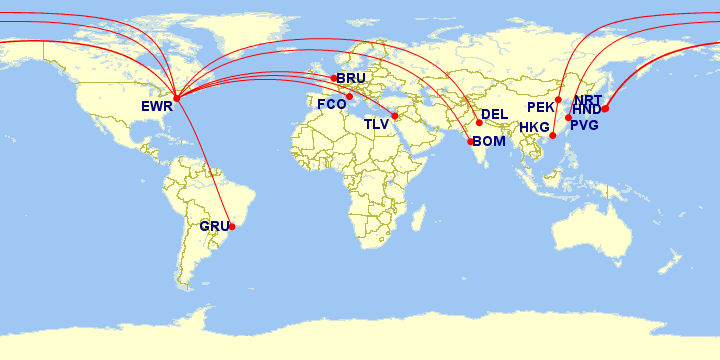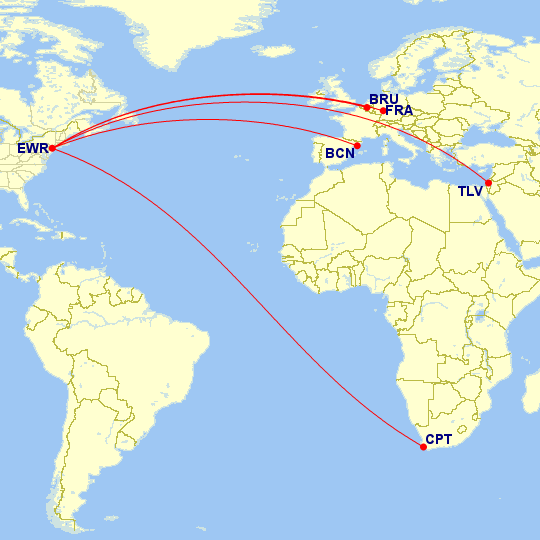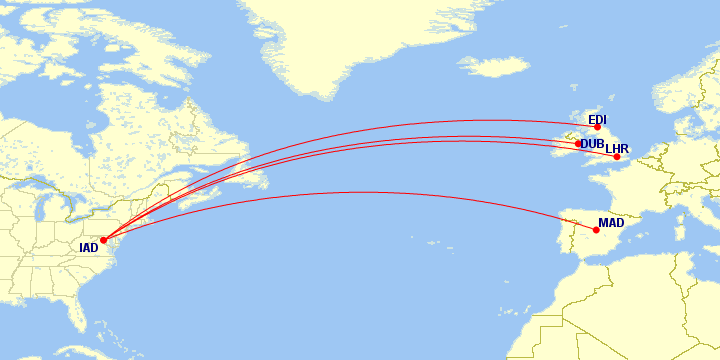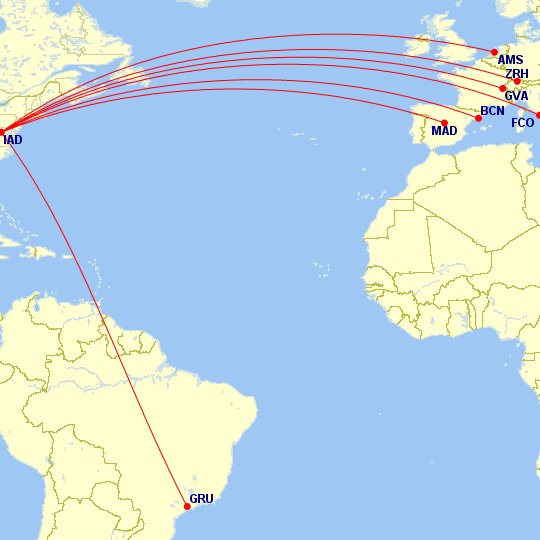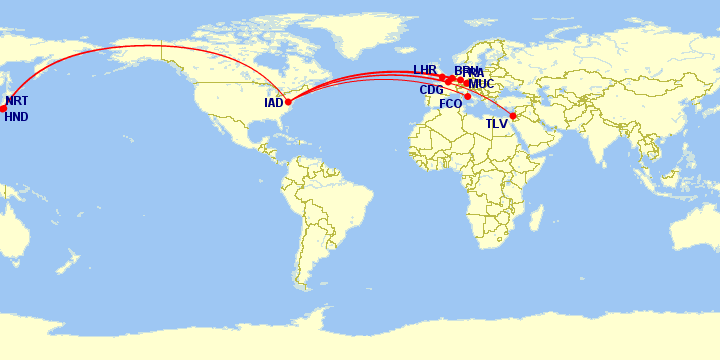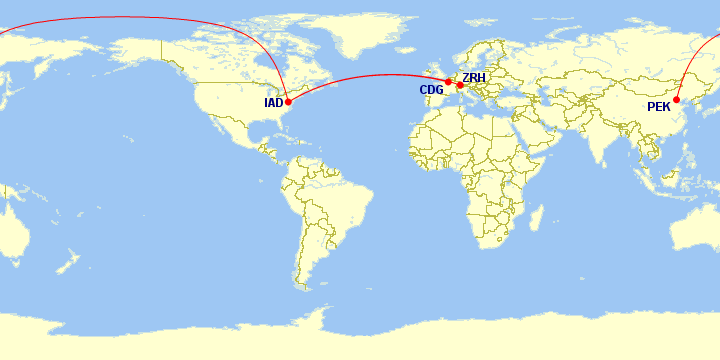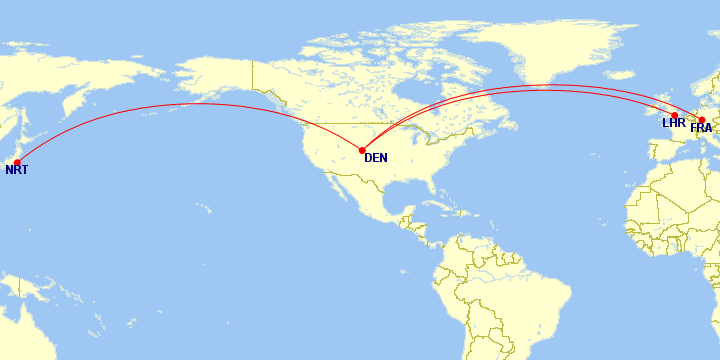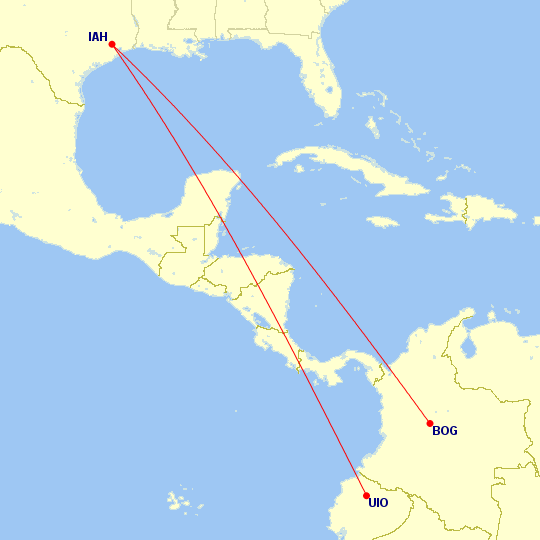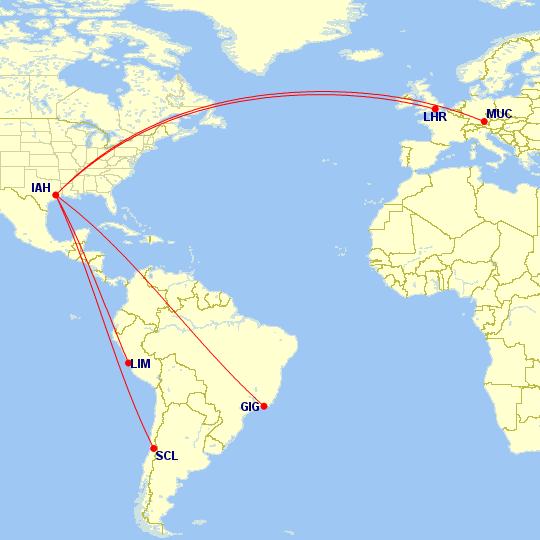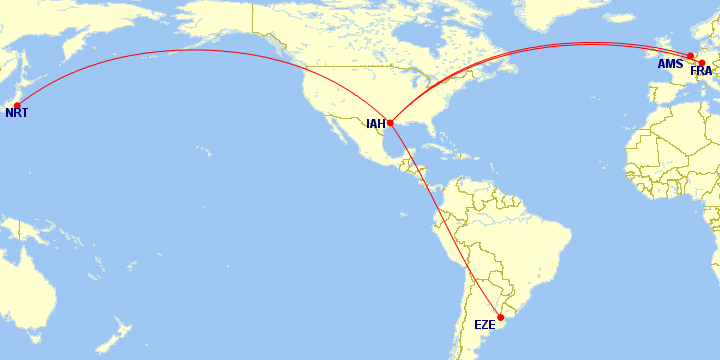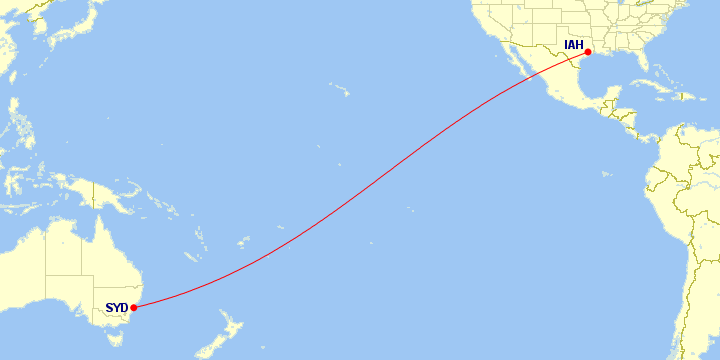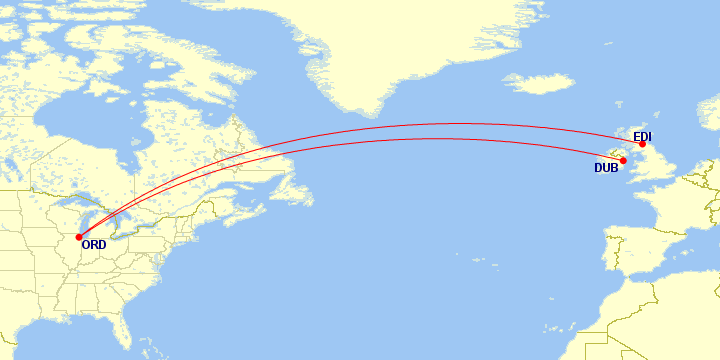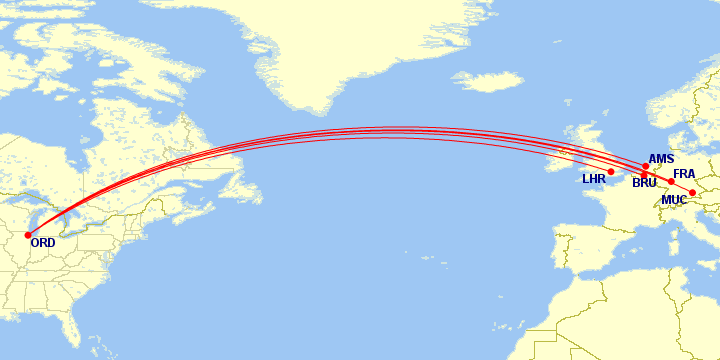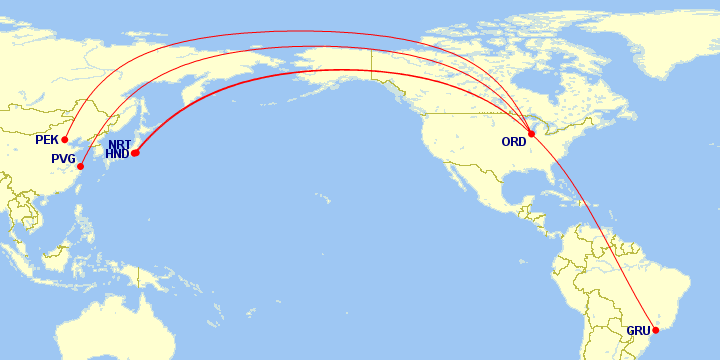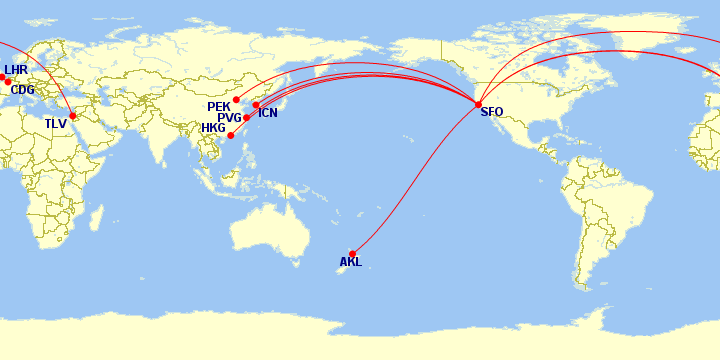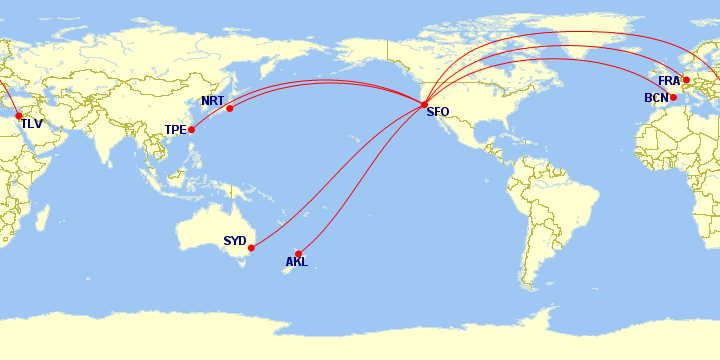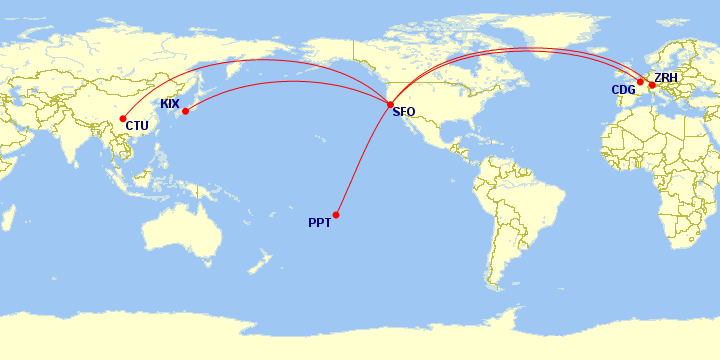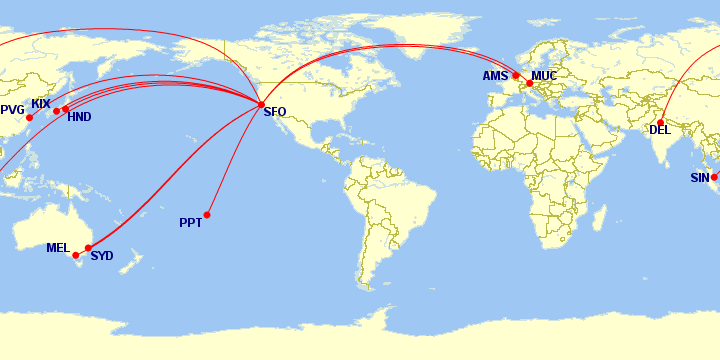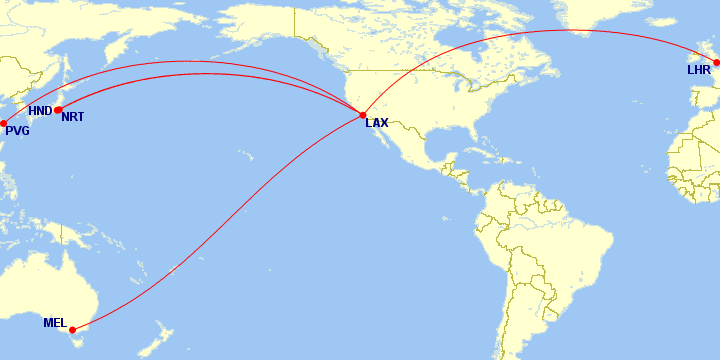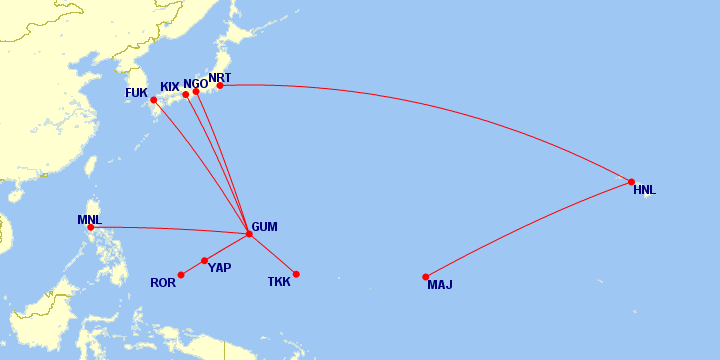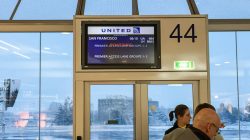Which aircraft will United Airlines operate for each of its international destinations in 2020? With help from a friend, I was able to sort through scheduling data between now and October to give you an idea. This information might be helpful if you prefer (or are looking to avoid) a particular aircraft type. Yes, you can find this in the search results when you are booking a ticket but that doesn’t mean the airline is using the same aircraft all year long.
I plan to perform a similar analysis for international flights operated by American Airlines and Delta Air Lines. Any comments you can provide now may be incorporated in those posts.
These summaries are organized by hub airport and aircraft. If you want to look for a specific destination, I recommend you use Control-F to search the page. Keep in mind these data are only current through October 2020 and were pulled around November 2019. It’s possible that there have been schedule changes since the original data request or that the airline will shift its fleet around after October.
In addition, I haven’t focused too much on operating frequency. It’s possible there will be changes in how many flights operate each day or week. As long as it’s the same aircraft, I don’t see much point in calling this out. You’re gonna find out when you try to book a ticket which days are available. But I do know which aircraft are being used on which days in situations where it’s mixed. If you have a specific question that requires more detail, post a comment and I’ll take a look at the original data.
United Airlines Fleet
Since I am limiting this analysis to international routes departing from US hub airports, you may not see every aircraft in United’s fleet. However, a complete list is available on United’s fleet page. International routes are operated by only five aircraft families, all manufactured by Boeing. Some type variants also exist within each family. United also has multiple different configurations for the same aircraft, sometimes changing up the number of seats in each cabin or using different seat designs.
The Boeing 737-700 (73G) and 737-800 (738) are two narrowbody aircraft you may be familiar with from domestic travel. They are joined by the Boeing 757-200 (752), which is an older but much longer narrowbody aircraft that you won’t see as often today due to issues with fuel efficiency. The Boeing 767-300ER (763) and 767-400ER (764) are also older planes, but these are widebody aircraft with two aisles. Several of the 767-300ER have been configured with the newer United Polaris business class, but owing to a narrower fuselage it is in a staggered 1-1-1 arrangement. In what can only be described as a special version of hell, the 767-400ER uses the older lie-flat design with a 2-1-2 configuration. (That is not a typo.)

The Boeing 777-200 (777) and 777-300ER (77W) are more modern twin-aisle aircraft with longer range. As many airlines have dialed back on double-decker aircraft like the A380 or B747, they have relied on the B777. All of the 777-300ER (but only one configuration of the 777-200) have the newer, 1-2-1 configuration of United Polaris business class. Finally, the Boeing 787 exists in three variants: 787-8 (788), 787-9 (789) and 787-10 (781). These have composite structures instead of aluminum and are very fuel efficient, but they aren’t as large as the B777. Only the 787-10 has the newer, 1-2-1 configuration of United Polaris business class.

Note: United doesn’t specify the Boeing 777-200 with the IATA code “772” in these data. However, they do call out the Boeing 777-300ER with “77W”. I have assumed that when “777” is used the reference is to the Boeing 777-200, which is the only other Boeing 777 in United’s fleet.
Maps generated by the Great Circle Mapper – copyright © Karl L. Swartz.
From Newark (EWR)
Moving east to west, I’ll begin with Newark. This is also the most complex operational hub in United’s network. United operates nearly every aircraft family out of Newark while at other hubs it usually focuses on only one or two families. This is partly due to the prestige of its location near New York, which provides the demand to support widebody aircraft, as well as the flexibility provided by its proximity to Europe, which permit narrowbody aircraft that for service to less popular destinations.
Boeing 737-700 and 757-200
United operates the smaller 737-700 on a single route to Bogota (BOG) while using the 757-700 for its service to some other Latin American and European destinations. Those include seasonal service to Stockholm (ARN) and Glasgow (GLA) from May through September, seasonal service to Reykjavik (KEF) from June through September, and year-round service to Edinburgh (EDI) and Lima (LIM). There is also service to Porto (OPO) and Shannon (SNN) beginning in March.
Boeing 767-300ER and 767-400ER
You’ll find the Boeing 767-300ER used almost exclusively on flights to London Heathrow (LHR), Manchester (MAN), Zurich (ZRH), and Geneva (GVA) as well as several destinations with seasonal service: Naples (NAP) and Venice (VCE) beginning in May, Nice (NCE) and Palermo (PMO) from May through September, and Prague (PRG) from June through September. There are a few 767-300ERs put into service on flights to Paris (CDG) during May through July, but the primary 787-10 keeps working.
The 767-300ER also has a strong presence at Berlin (TXL), but this flight is operated by a 767-400ER until late March. It may be headed to Amsterdam (AMS), where -300ER service lasts all year but -400ER service begins in March. Lisbon (LIS) and Madrid (MAD) are more decisive, with a mix of 767 variants until they settle on the -400ER in May. Barcelona (BCN) also has a mix of -300 and -400ER service until it shifts to the 787-10 in late April.
The 767-400ER is used exclusively on service to Athens (ATH), although service only begins in May. You’ll find it year-round on flights to Munich (MUC) and Milan (MXP).
Boeing 777-200 and 777-300ER
The Boeing 777-200 is used exclusively on flights to New Delhi (DEL), Beijing (PEK) and, beginning in late March, also Tokyo Haneda (HND). There are a handful of flights to Brussels (BRU) in February and March, but it’s mostly the 787-10. The 777-200 also shows up on flights to Rome (FCO) beginning in May, previously operated by one of the 767 variants.
Several destinations use a mix of Boeing 777 variants. Service to Shanghai (PVG) and Sao Paulo (GRU) begins with the 777-300ER before switching to the 777-200 in late March. Hong Kong (HKG) is the reverse, beginning with the 777-200 before switching to the 777-300ER.
The Boeing 777-300ER is used exclusively on flights from Newark to Mumbai (BOM) and Tokyo Narita (NRT). It’s also pretty common on flights to Tel Aviv (TLV), though expect to see the 787-10 mixed in starting late March.
Boeing 787-9 and 787-10
United operates the 787-9 on a single route to Cape Town (CPT) but only from January through March. It’s much more common to find the 787-10. However, Dublin is the only route that uses the 787-10 exclusively. On other routes you’ll find it mixed in with other aircraft families depending on the time of year.
From April onwards, the Boeing 787-10 is found on flights from Newark to Barcelona (BCN), a route that was earlier operated with a Boeing 767-300 or -400. It’s much more common to find the 787-10 on flights to Brussels (BRU), with a handful of flights operated by a 777-200 in February or March. Flights to Frankfurt (FRA) see the 787-10 all year long, but the 767-300 starts showing up in April, too. Conversely, flights to Tel Aviv (TLV) are normally operated with a 777-300ER, but the 787-10 shares the schedule beginning in late March.
From Washington Dulles (IAD)
Somehow I almost forgot about Dulles as I was drafting my post even though it’s nearly as complex as Newark. You’ll still find a large variety of aircraft types, but not as many variants among them.
Boeing 757-200
United uses its Boeing 757-200 fleet for only a handful of routes with short distances, particularly Dublin (DUB) and Edinburgh (EDI). However, there’s also high frequency on flights to London Heathrow (LHR) despite additional service with a 767-300ER and 777-200. Madrid (MAD) is the only other destination with 757 service, although this is a seasonal route that begins in May and shifts to a 767-300ER for a short time in summer.
Boeing 767-300ER and 767-400ER
The two variants of the Boeing 767 are used pretty interchangeably at Dulles in what seems like a filler for slots that don’t have other available aircraft or when needed to up-gauge and down-gauge for seasonal demand. Only Sao Paulo (GRU) and Geneva (GVA) use the 767-300ER exclusively.
Amsterdam (AMS) is serviced first by a 767-300ER before shifting to the -400ER for the summer months. Service to Barcelona (BCN) starts with a -400ER in May before shifting to a mix of variants in September. Rome (FCO) uses both in spring and fall months while relying on the 777-200 during the summer. Heathrow has an even mix of 767-300ER, 757-200, and 777-200 in the first quarter before switching entirely to the 757 and 777. Madrid (MAD) is usually serviced with a 757-200 but sees the 767-300ER pick up the entire load just for the month of August. Zurich (ZRH) has a few 767-300ERs in winter, shifting to a -400ER in spring then a 787 in summer before going back to a -400ER.
Boeing 777-200
The Boeing 777-200 is exclusive to most routes that it serves, including Brussels (BRU), Frankfurt (FRA), Munich (MUC), Tel Aviv (TLV), and Tokyo. United will be shifting its service from Tokyo Narita (NRT) to Tokyo Haneda (HND) in late March.
The 777-200 is also used on most flights to Paris (CDG), but not until March. Before then, service is operated by a Boeing 787-8. Rome (FCO) also sees a lot of 777 activity, with the exception of 767-400ER flights in the first quarter and a transition back to the 767-300ER in October.
London (LHR) is operated by a 777-200 all year long, but this is supplemented by additional year-round flights on a Boeing 757-200 and a few 767-300ERs in the first quarter. Definitely take a close look at your itinerary before you book when flying to London because there’s a big difference in the experience on a 757 vs. a 777.
Boeing 787-8
United uses its Boeing 787-8 on only three routes to Paris (CDG), Beijing (PEK), and Zurich (ZRH). However, only Beijing enjoys exclusive service. Paris is served by a 777-200 for most of the year, with the 787-8 limited to winter months. Conversely, Zurich is served by a 787-8 only in the summer. Spring and fall see a 767-400ER take over, while a 767-300ER is used for the first quarter.
From Denver (DEN)
United will exclusively operate the Boeing 787-8 on its international departures from Denver (DEN) to Frankfurt (FRA), London Heathrow (LHR), and Tokyo Narita (NRT).
From Houston (IAH)
Houston is a major base for United’s fleet of older Boeing 767 aircraft. Most of these are the 767-300 with a few 767-400ER thrown in for good measure. This may be due to its central mid-continent location. Longer flights to Europe and Asia tend to be concentrated on the coasts.
Boeing 737-700 and 737-800
The Boeing 737-700 will be used on two routes from Houston (IAH) to Bogota (BOG) and UIO. However, each route will see a few other aircraft in service during the early parts of 2020. IAH-BOG will also have regular flights operated by the Boeing 757 roughly half the time through March. IAH-UIO will see only a handful of flights operated by the Boeing 737-800 in January and February.
Boeing 767-300ER and 767-400ER
You can find the Boeing 767-300ER on flights from Houston (IAH) to Lima (LIM) and Munich (MUC) all year, while flights to Rio de Janeiro (GIG) and Santiago (SCL) will be phased in beginning in March. The Boeing 767-400ER will be operating to SCL and GIG during the first quarter of 2020 before the transition. Finally, United will also operate the 767-400ER on flights to London Heathrow (LHR) during January and February before transitioning entirely to the Boeing 777-200.
Boeing 777-200
United will operate the Boeing 777-200 on its international departures from Houston Bush Intercontinental (IAH) to Amsterdam (AMS), EZE, Frankfurt (FRA), and Tokyo Narita (NRT).
Boeing 787-9
The Boeing 787-9 will be used on a single route from Houston (IAH) to Sydney (SYD).
From Chicago O’Hare (ORD)
United operates an older fleet out of Chicago, which is also its corporate headquarters. You can still see the Boeing 757 in international service, as well as the 767-300ER and 777-200. There are none of the more modern 787 or 777-300ER in my dataset. But remember that the 767-300ER also has a lot of the new Polaris seating, so an old plane doesn’t necessarily mean a bad experience.
Boeing 757-200
Expect to see the Boeing 757-200 on shorter routes to Dublin (DUB) and Edinburgh (EDI), where it operates all year. However, Edinburgh service is seasonal and only occurs between May and September.
Boeing 767-300ER
Likewise, you’ll only find the Boeing 767-300ER on a handful for routes like Amsterdam (AMS) and London Heathrow (LHR). It will also operate to Frankfurt (FRA), Munich (MUC), and Brussels (BRU) during the first quarter before these routes transition to the 777-200.
Boeing 777-200
Most service out of Chicago will take place on a Boeing 777-200. This includes Frankfurt, Munich, and Brussels as just mentioned, as well as an exclusive presence on flights to Sao Paulo (GRU), Beijing (PEK), and Shanghai (PVG). The 777-200 will also be used on all flights to Tokyo, though this will switch from Narita (NRT) to Haneda (HND) at the end of March.
From San Francisco (SFO)
United operates only the Boeing 777 and 787 families out of its hub in San Francisco. However, there is a lot of movement within and between these families.
Boeing 777-200
The Boeing 777-200 will be used exclusively on flights from San Francisco (SFO) to Beijing (PEK) and Hong Kong (HKG). However, there will also be a strong presence beginning in March on flights to Auckland (AKL) after phasing out the Boeing 787-10 and to Paris (CDG) after phasing out the Boeing 787-8. There will be a handful of flights to Shanghai (PVG) and Tel Aviv (TLV) before shifting to other aircraft. Service to Soul (ICN) will also pick up in March while continuing existing service on the Boeing 787-9. Service to London Heathrow (LHR) will run throughout the year, joined by the Boeing 777-300ER in April.
Boeing 777-300ER
In addition to London, United will also use the Boeing 777-300ER on a handful of flights to Auckland (AKL) in January as well as limited service to Barcelona in February when it hosts the Mobile World Congress. Flights to Sydney (SYD) will continue through March before switching to a 787 variant. Around the same time, flights to Tel Aviv (TLV) will switch over from the 777-200 to the 777-300ER. While 777-300ER will be used exclusively on flights to Taipei (TPE) and Tokyo Narita (NRT), service to Frankfurt (FRA) will be balanced between the 777-200 and 777-300ER all year long.
Boeing 787-8
Service to Paris (CDG) will begin on the Boeing 787-8 before transitioning to the 777-300ER in March. Likewise, flights to Papeete (PPT) transition to the 787-9 toward the end of February. Flights to Osaka (KIX) are balanced between the 787-8 and -9 in the first quarter before shifting pretty heavily to the 787-9 for the rest of the year. However, the 787-8 will be used exclusively all year on flights to Chengdu (CTU) and Zurich (ZRH).
Boeing 787-9
The Boeing 787-9 will be used exclusively for service to Amsterdam (AMS), Delhi (DEL), Melbourne (MEL), Munich (MUC), and Singapore (SIN). However, it flies to many other destinations during part of the year. Already mentioned are flights to Sydney (SYD) beginning in April and Papeete (PPT) beginning in February. It will be used for most of the year on trips to Tokyo Haneda (HND), although expect to see the 787-10 before that. Service to Osaka (KIX) is available on the 787-9 all year, but more likely on the 787-8 before April. Likewise, Shanghai (PVG) will see a few flights on the 777-200 and 787-10 in the first quarter before shifting entirely to the 787-9.
Boeing 787-10
Although it’s the newest 787 variant, the Boeing 787-10 will only be used on a few flights from San Francisco at the beginning of the year before being redeployed elsewhere. Expect to see it on flights to Auckland (AKL), Tokyo Haneda (HND), and Shanghai (PVG). At no point will it be the exclusive aircraft on a particular route, so be sure to check your reservation carefully in case you’re put on another 787 or a 777.
From Los Angeles (LAX)
United has a much simpler deployment out of its second California hub in Los Angeles. All of these are part of the Boeing 787 family.
The newer Boeing 787-10 will be used exclusively on flights to Tokyo Haneda (HND). Meanwhile, the Boeing 787-9 will be used on nearly all flights to Tokyo Narita (NRT), Shanghai (PVG), Melbourne (MEL), and London Heathrow (LHR).
From Honolulu (HNL) or Guam (GUM)
United has two main international destinations from Honolulu: the Marshall Islands (MAJ) and Tokyo Narita (NRT). You can find the Boeing 737-800 used on the former while flights to Narita require the larger Boeing 777-200.
Likewise, nearly all international flights from Guam are going to be operated by either a 737-700 or 737-800. These include Fukuoka (FUK), Osaka (KIX), Manila (MNL), Chubu (NGO), Palau (ROR), and the Micronesian islands of Chuuk (TKK) and Yap (YAP). You can find the Boeing 777-200 on about two-thirds of flights to Tokyo Narita during the first and third quarters. (Remember, my data don’t cover the fourth quarter.) However, the remaining third and all summer flying will take place on a 737-800.


